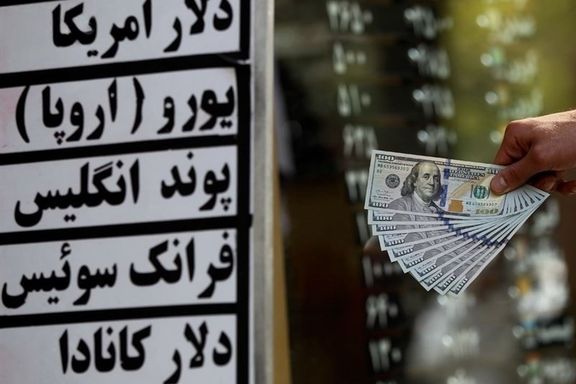Iran’s renewed push to bypass the dollar faces long odds

Iran has once again floated the idea of replacing the US dollar with local currencies in trade with its partners, but so far the push has gone nowhere.

Iran has once again floated the idea of replacing the US dollar with local currencies in trade with its partners, but so far the push has gone nowhere.
None of Tehran’s counterparts, including Russia, has agreed to settle transactions in national currencies, leaving Iran isolated despite years of lobbying.
At the Shanghai Cooperation Organization (SCO) summit on September 1, President Masoud Pezeshkian repeated the call.
A day earlier in Tianjin, China, he unveiled a new initiative under the title “SCO Special Accounts and Settlements,”describing it as a three-pronged plan to “reduce the effects of illegal sanctions on SCO members.”
What’s the proposal?
According to Pezeshkian, the initiative has three components:
Pezeshkian argued that the plan could boost the “economic resilience” of SCO countries and turn the bloc into “a successful model for building a multipolar, fair financial order resistant to external pressure.”
Is it realistic?
The hurdles are steep.
SCO members’ national currencies lack international credibility and many are volatile. The Iranian rial has lost 99 percent of its value in the past two decades, while the Russian ruble has sharply fluctuated since the Ukraine war.
Over the past five years, all SCO currencies—except Tajikistan’s—have depreciated.
Trade imbalances add to the problem.
Chinese customs data show China’s exports to India, Pakistan, and Uzbekistan are seven times larger than its imports from them. With Tajikistan, the imbalance reaches tenfold.
China, with a $150 billion annual trade surplus with those countries, is unlikely to accept settlement in their weak currencies—and even if it did, they would be of little use in trade with third parties.
Energy trade underscores the limits further.
Of China’s $512 billion in total trade with SCO members last year, $90 billion was fossil fuel imports. About 80 percent of global energy transactions—especially oil—are conducted in US dollars. Even the euro and pound play only marginal roles.
Beyond energy, the dominance of the dollar and euro in global commerce is overwhelming: the dollar accounts for more than 65 percent of trade transactions, the euro about 20 percent.
China’s yuan makes up just 3–4 percent, mostly in neighboring countries.
The core problem
Above all, Iran remains on FATF’s blacklist, which restricts transactions regardless of currency. Whether in dollars, euros, yuan, or local money, doing business with Iran carries legal and financial risks.
For these reasons, Tehran’s latest de-dollarization push is less a practical plan than an aspirational talking point.
Currency weakness, trade imbalances, dollar dominance in energy, and Iran’s isolation from the global financial system make the proposal unworkable.
Adding to the difficulty, Washington has taken a firm line against such initiatives, warning the BRICS bloc over de-dollarization efforts and threatening more sanctions and tariffs if they advance.